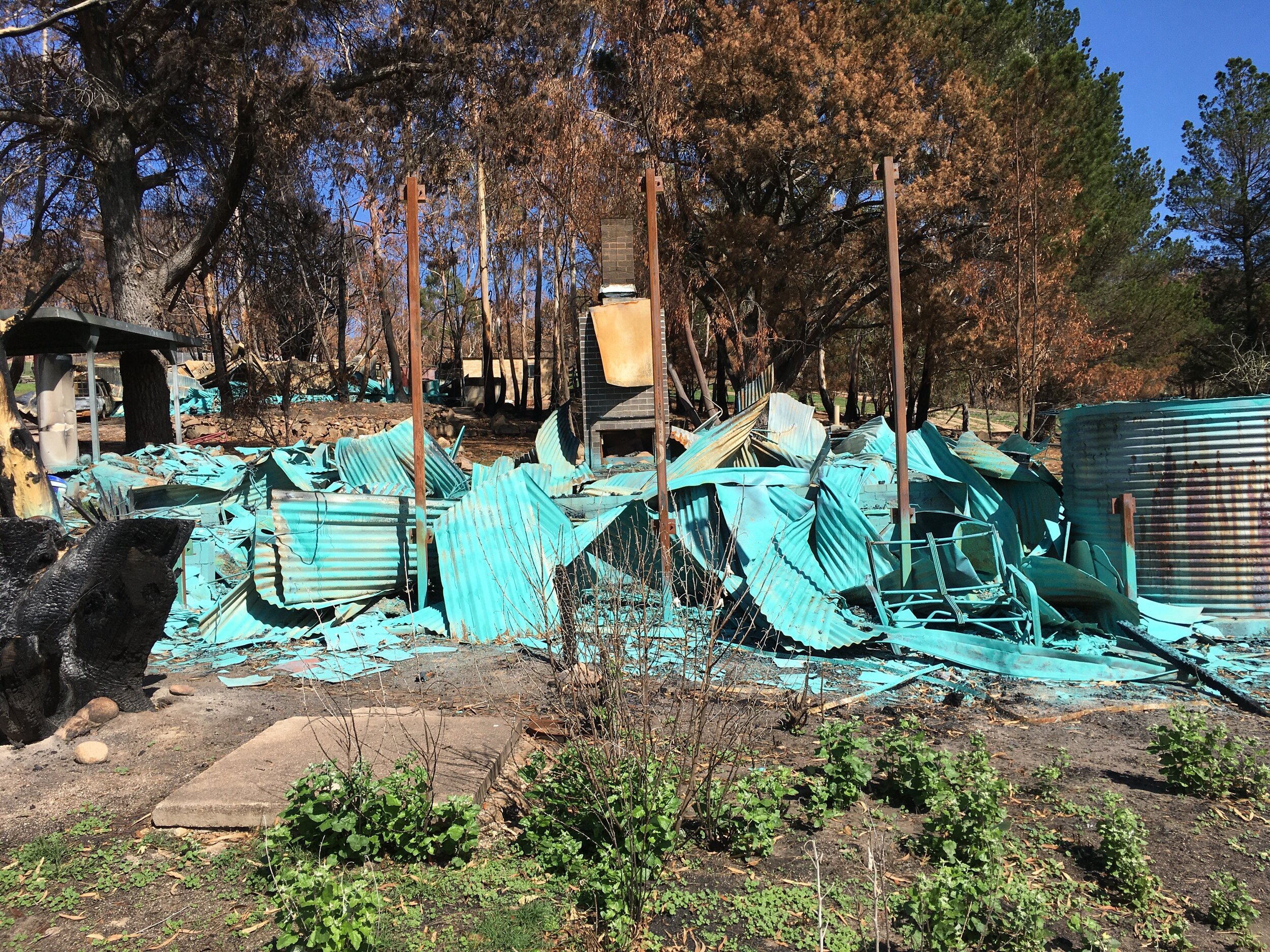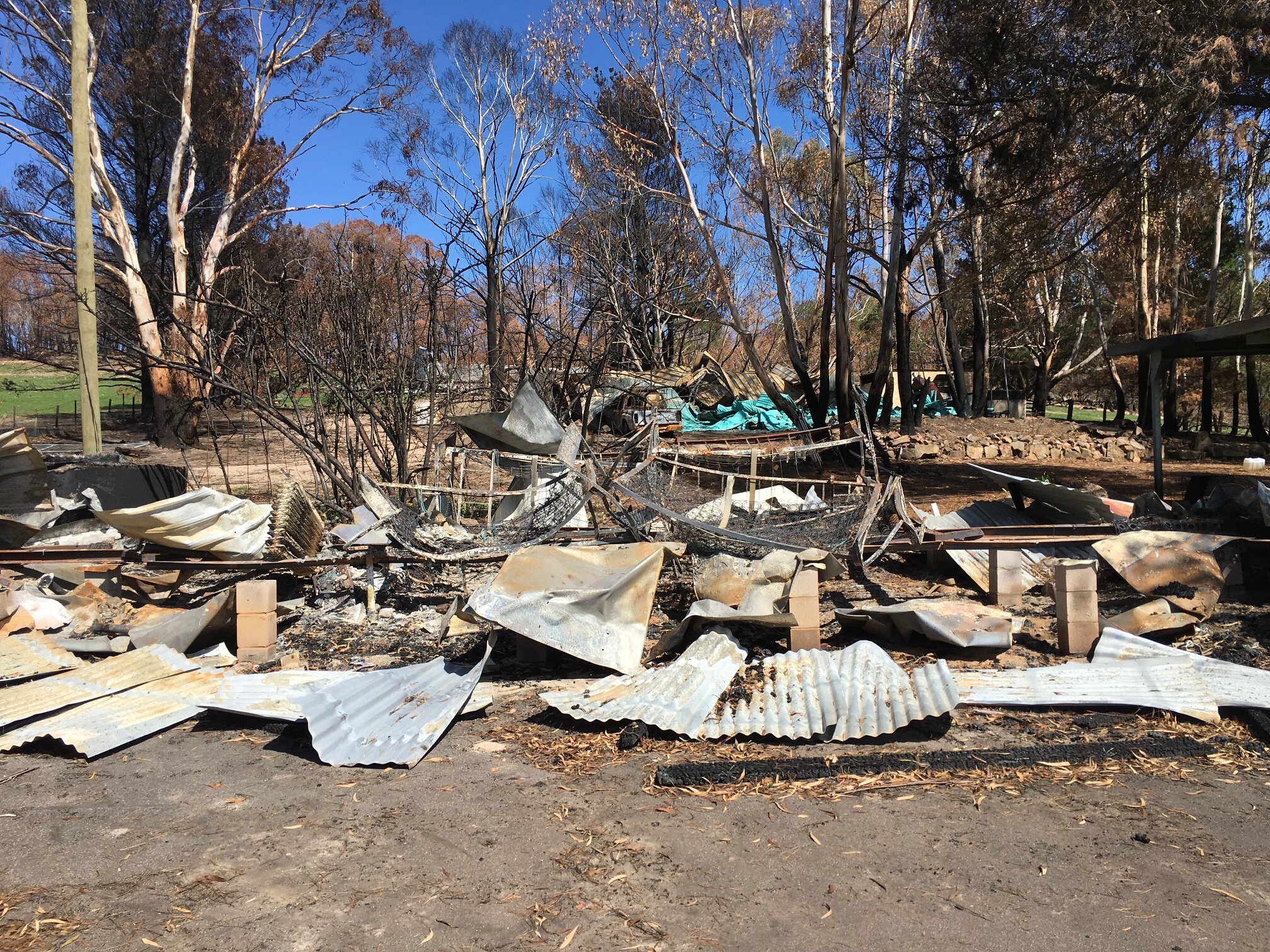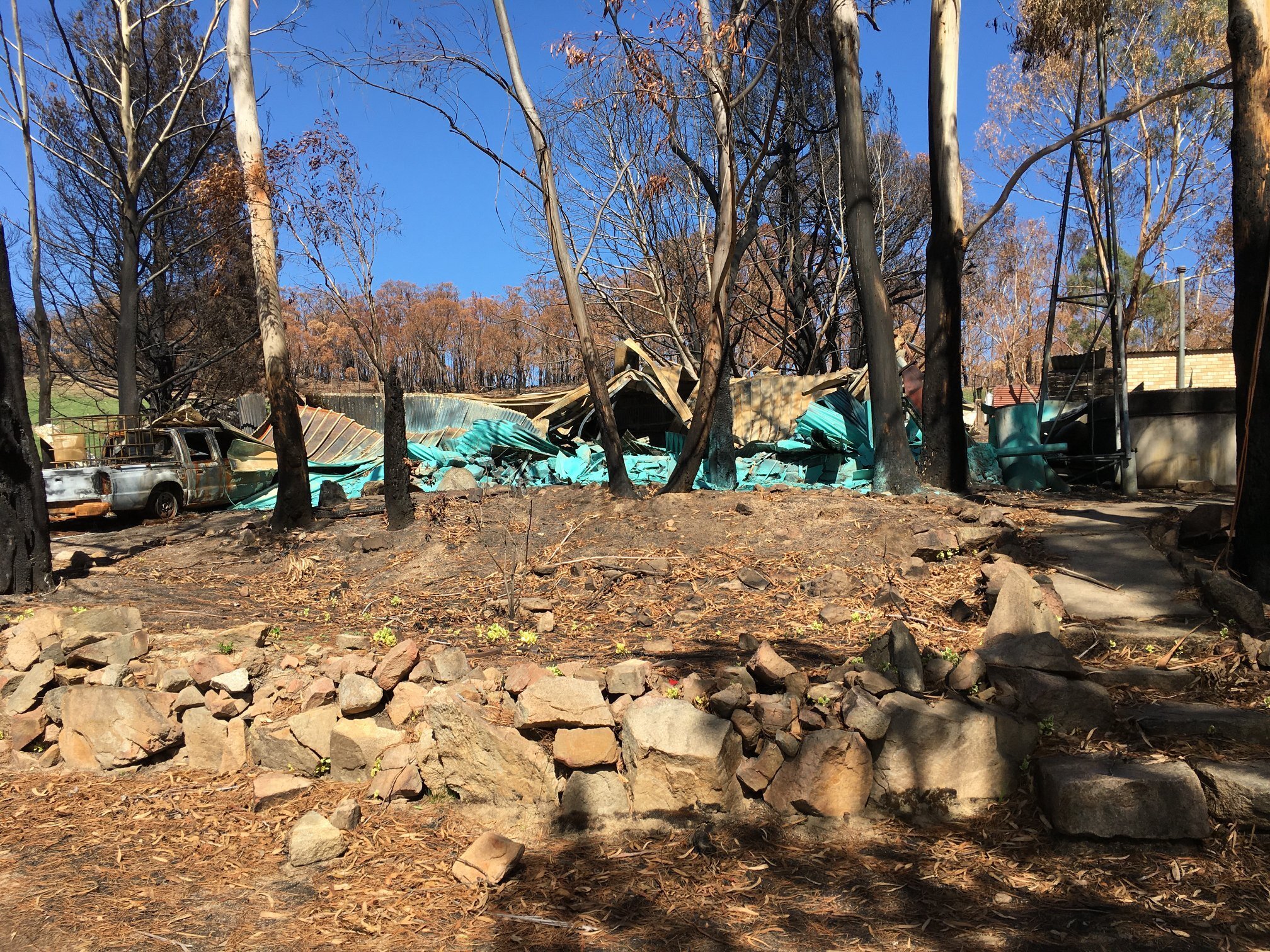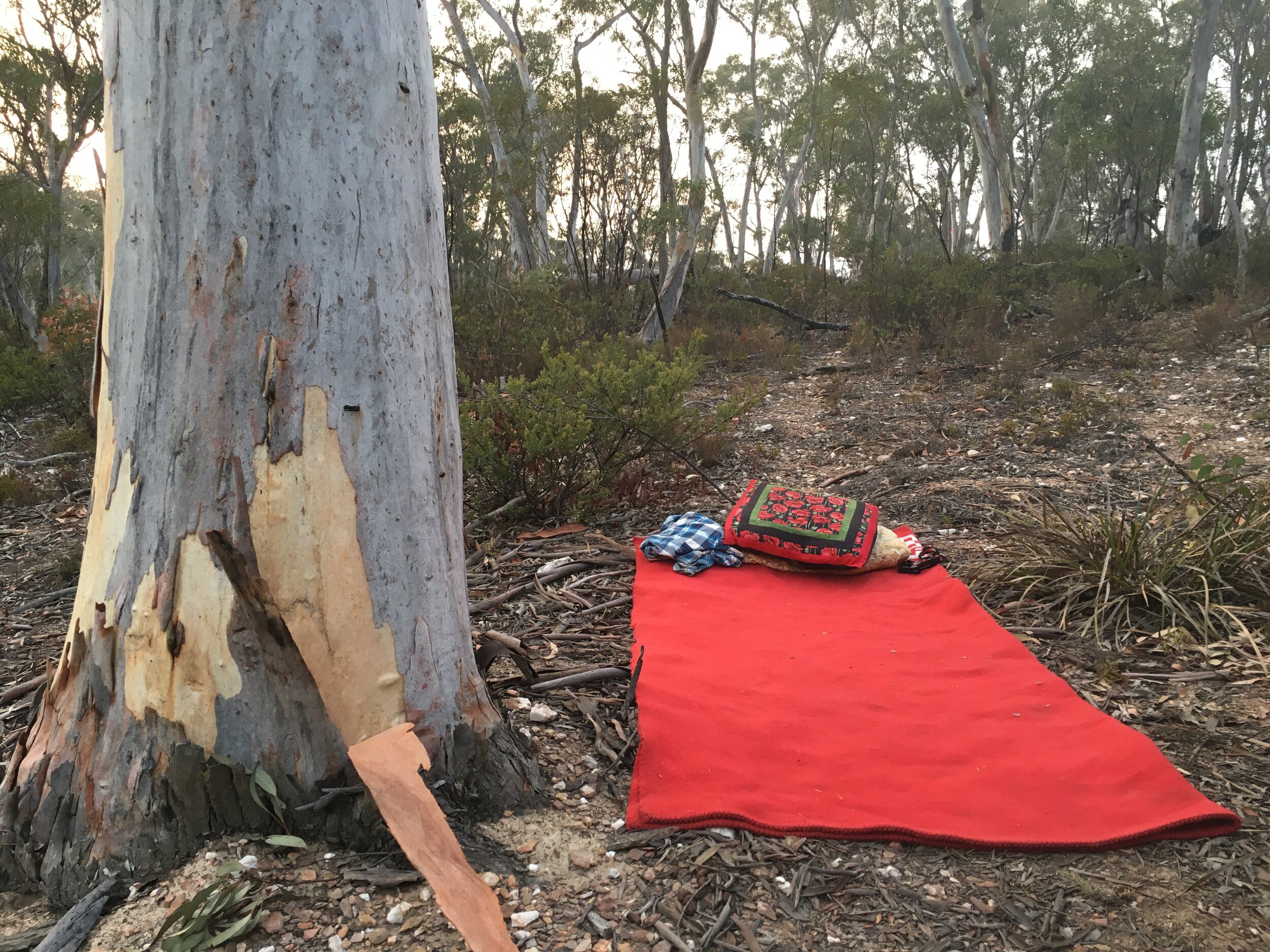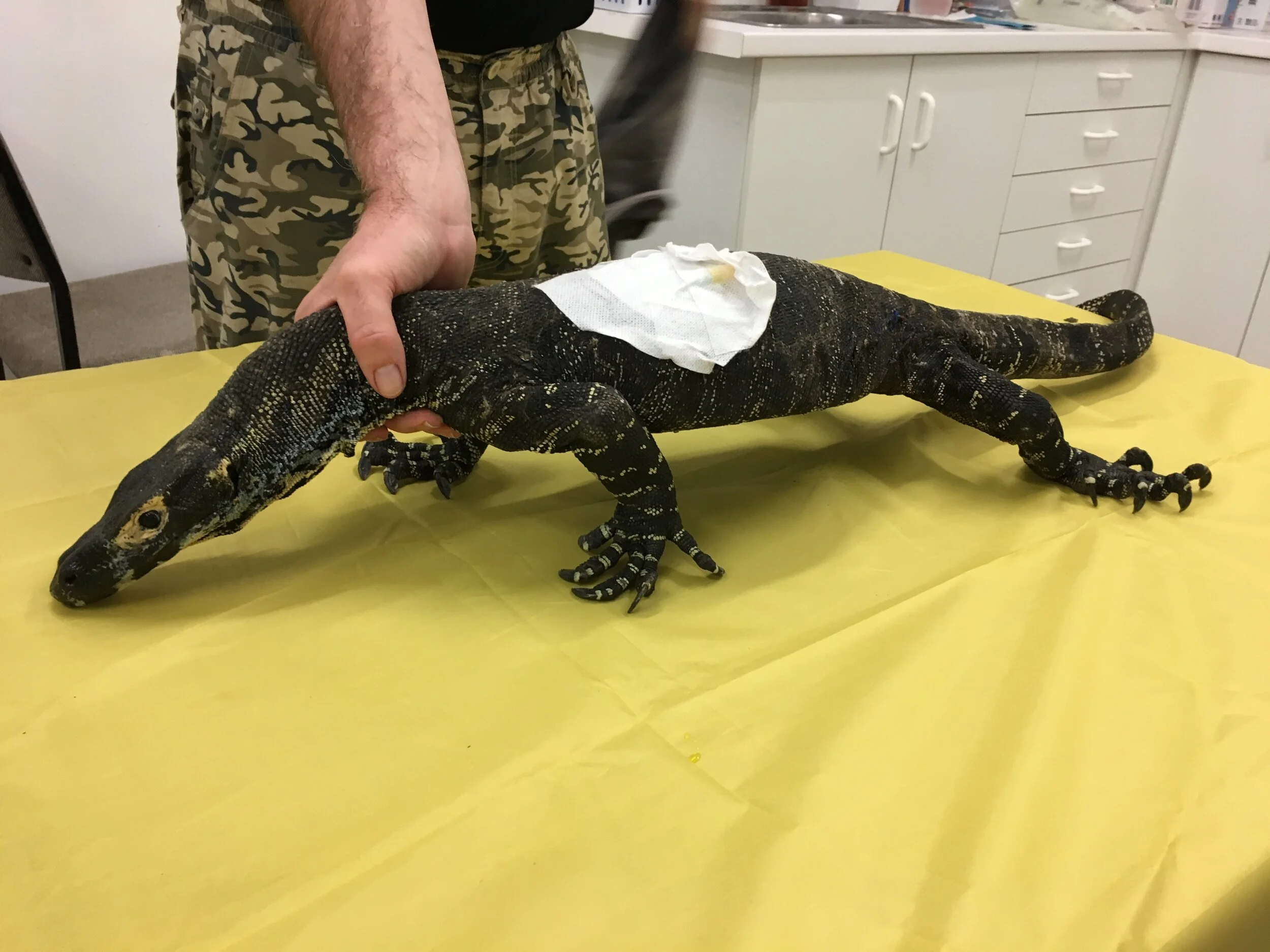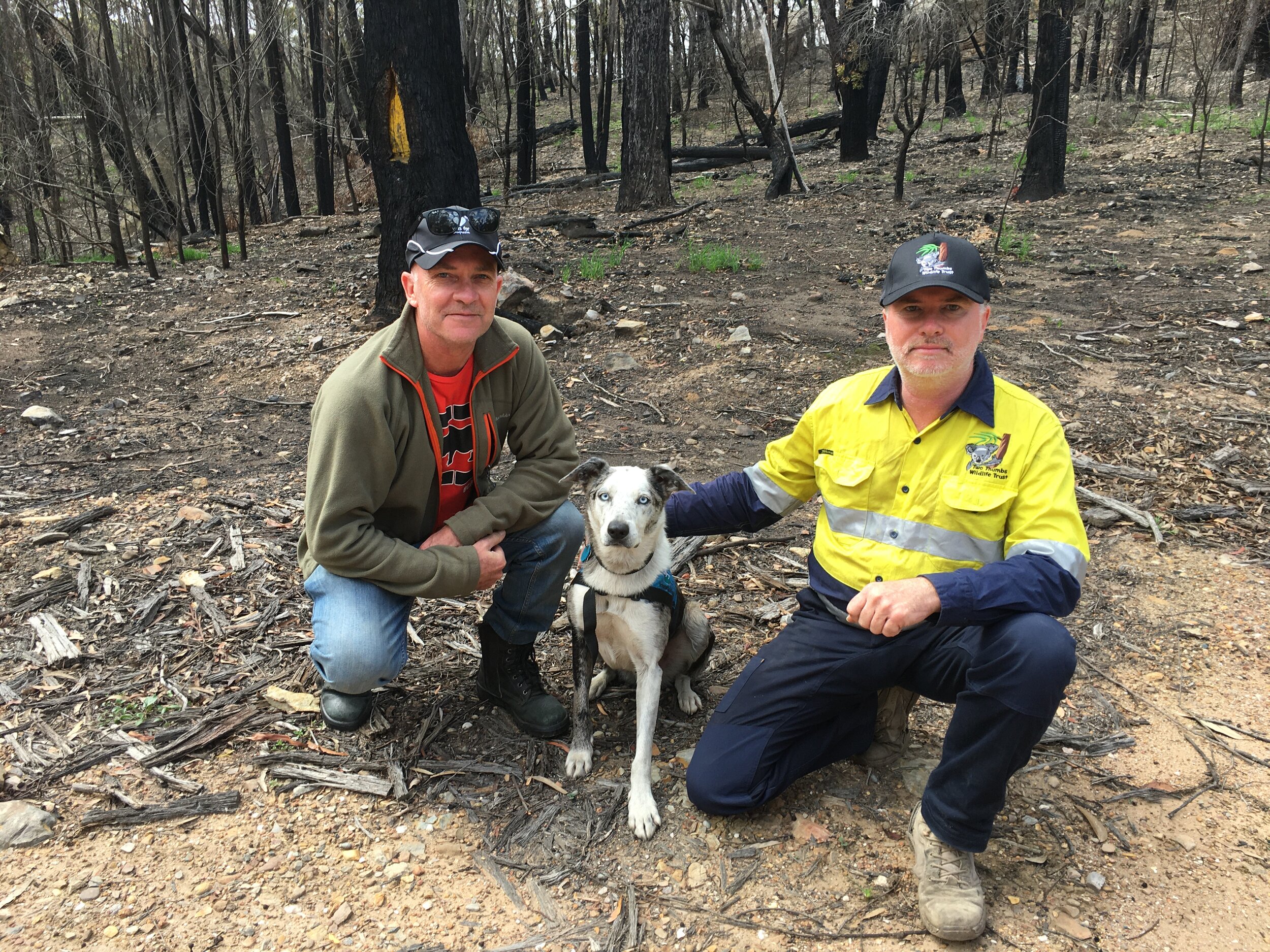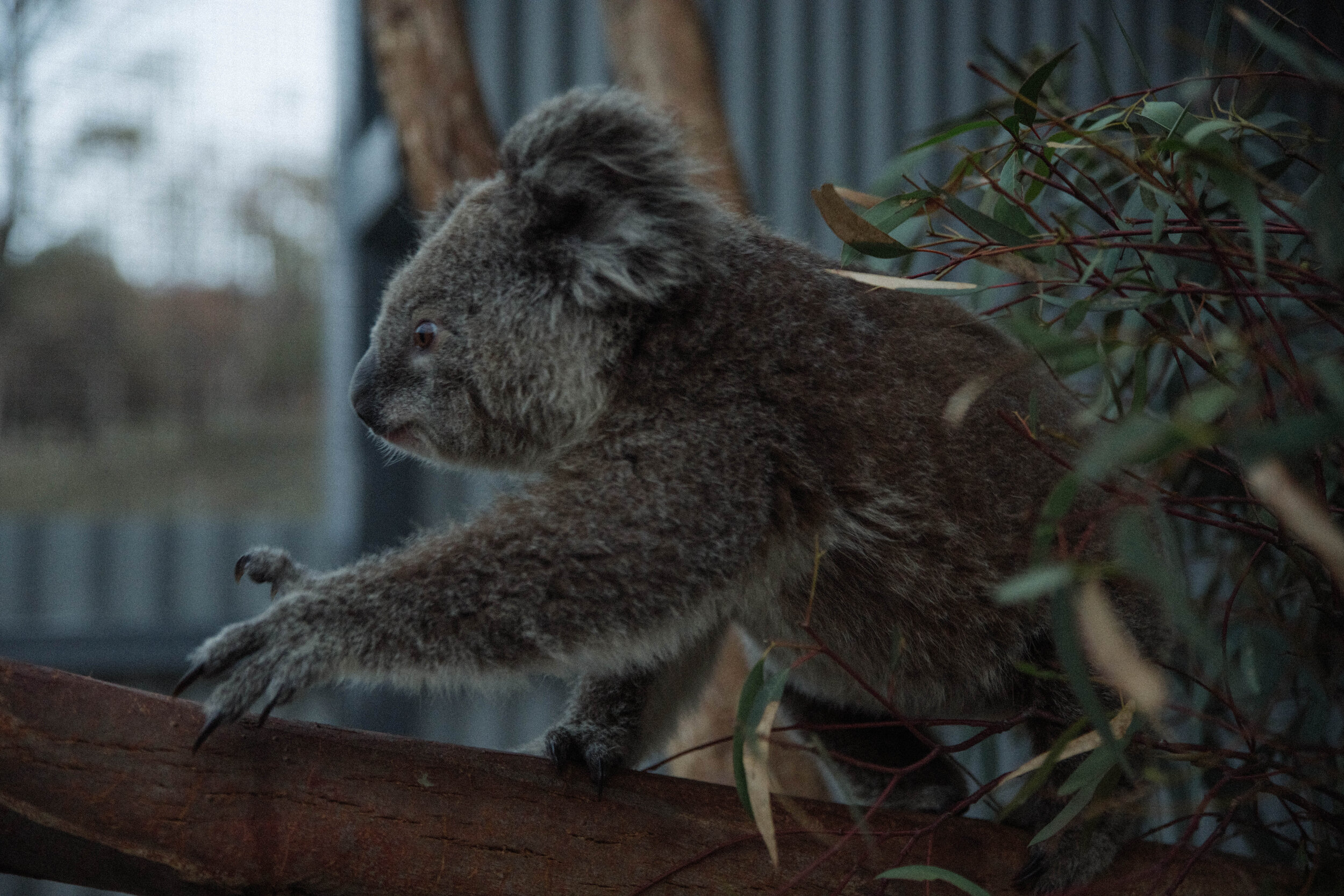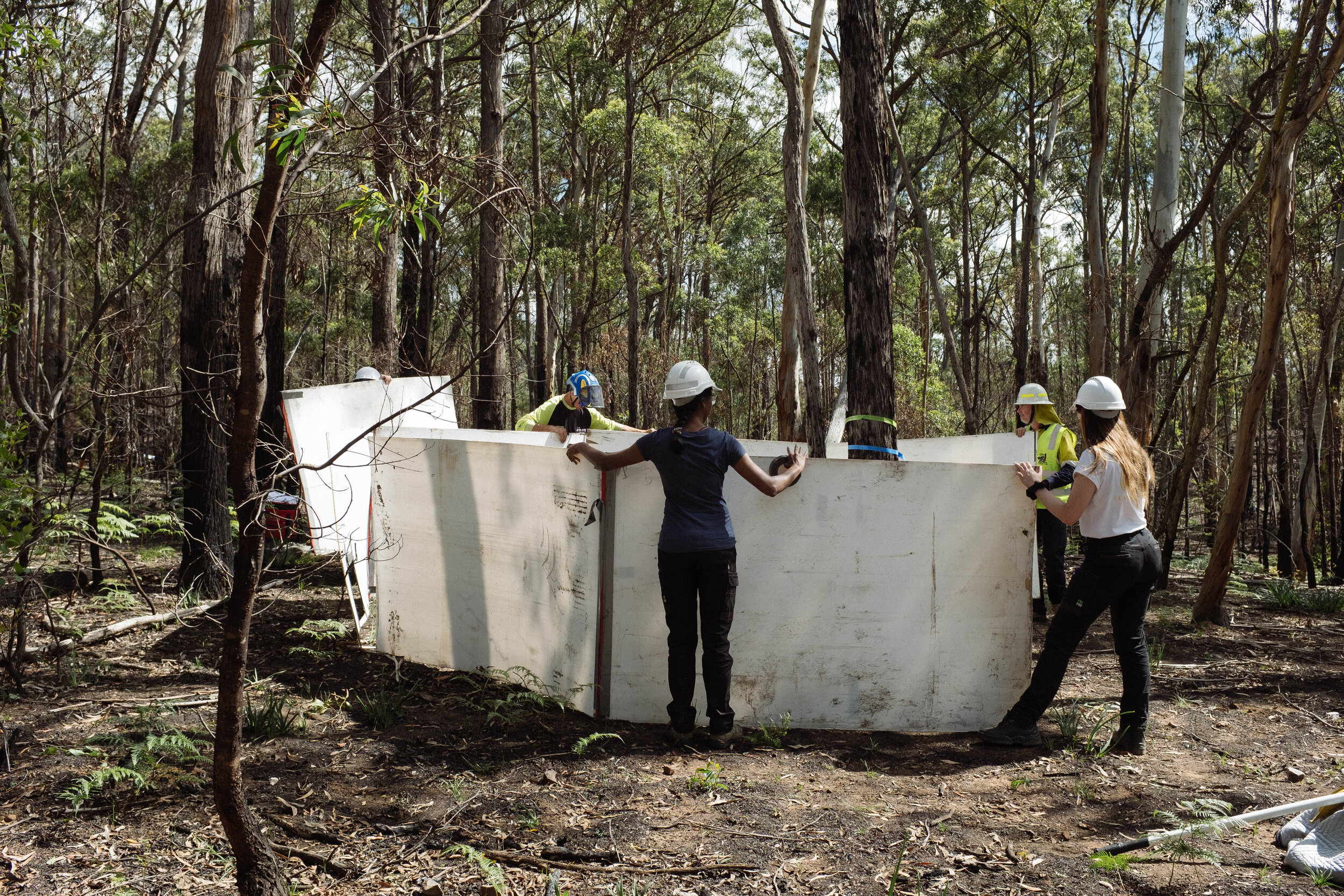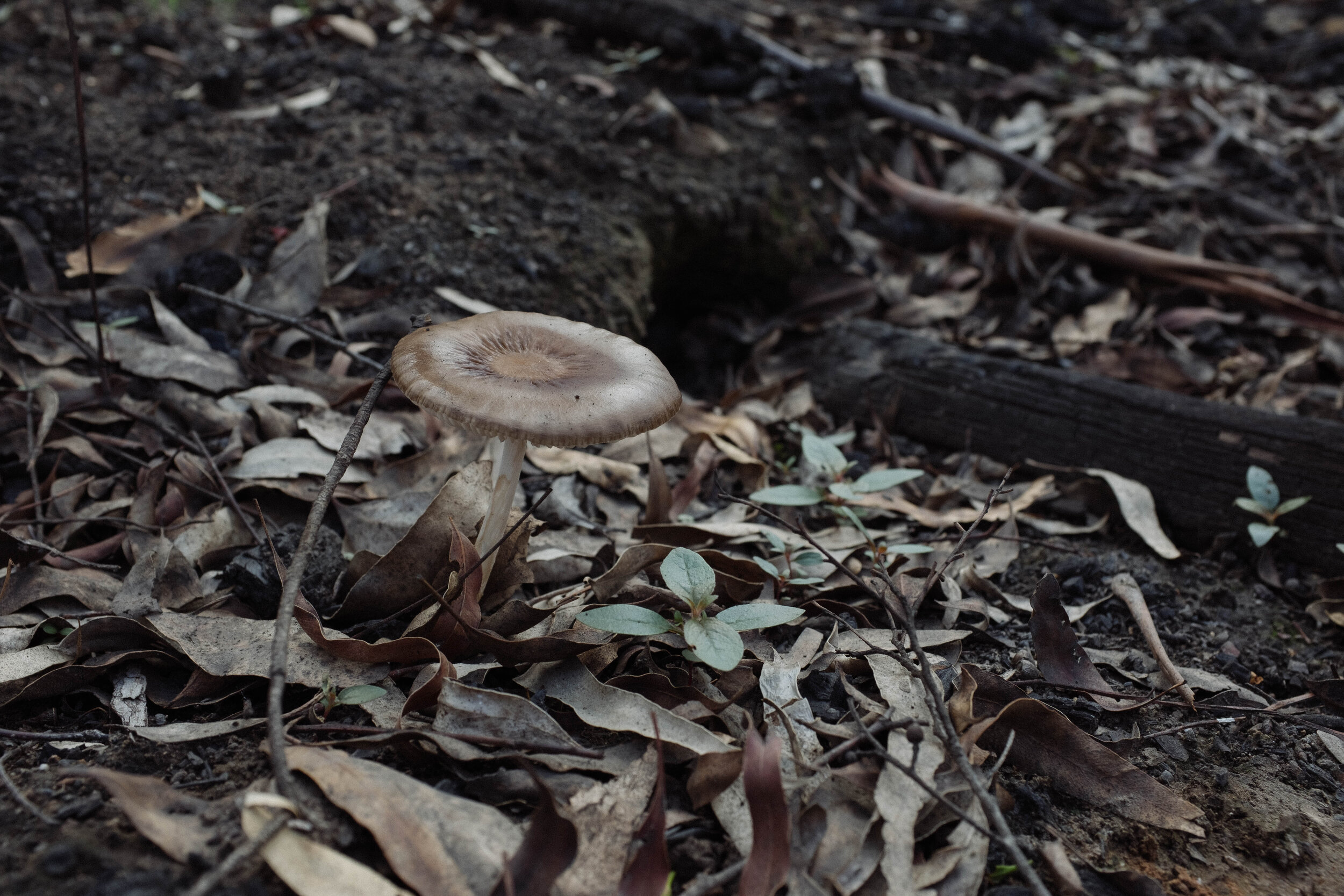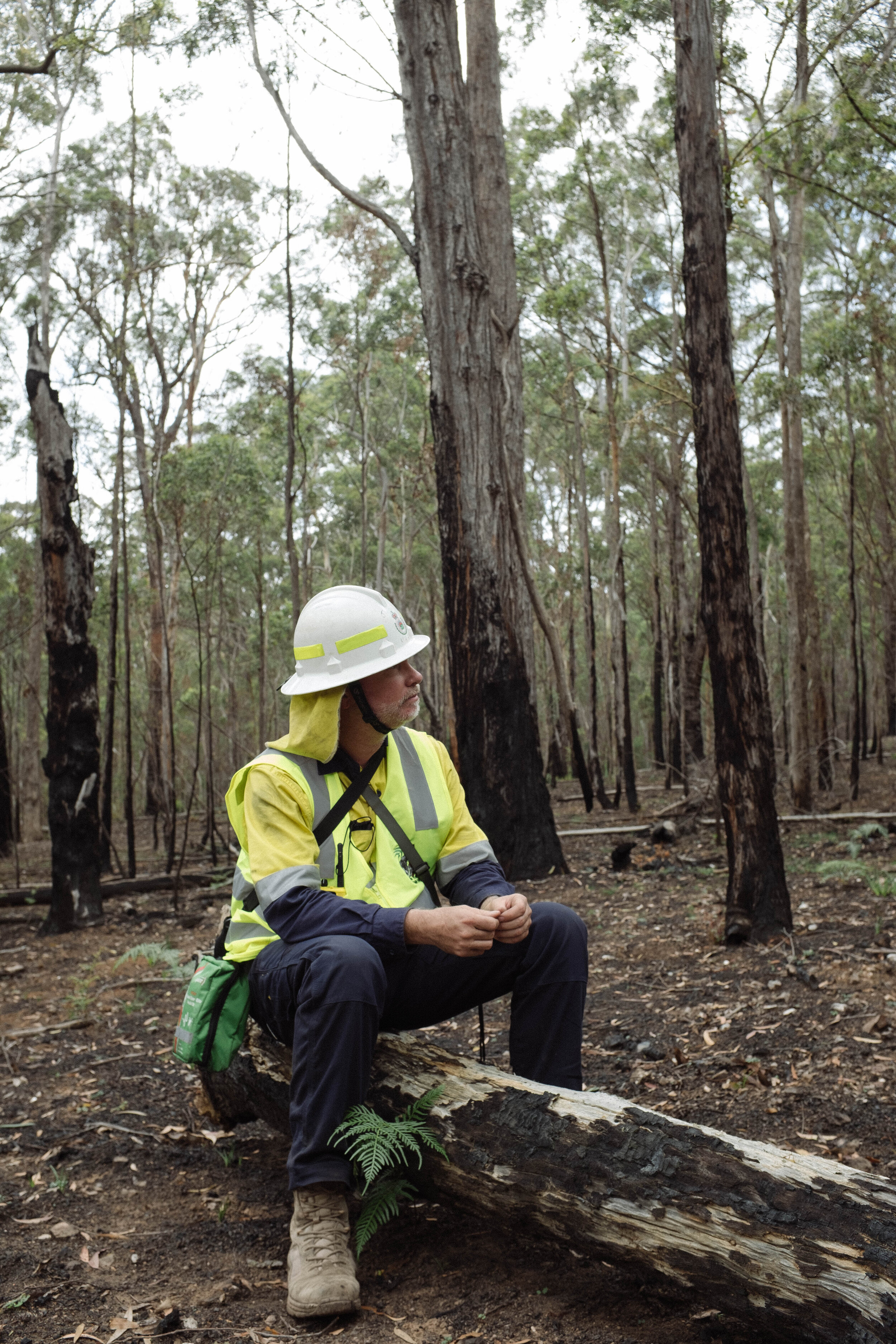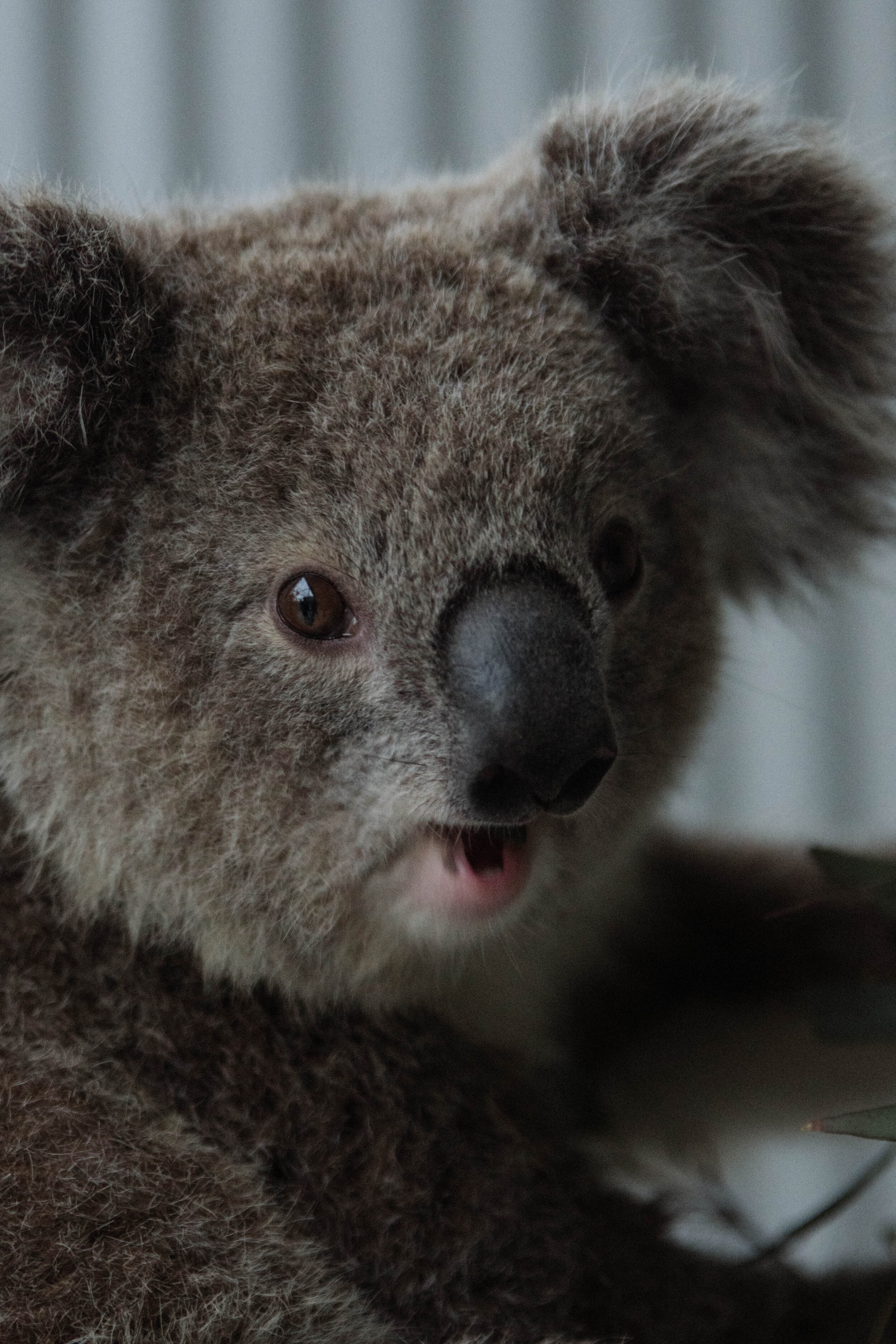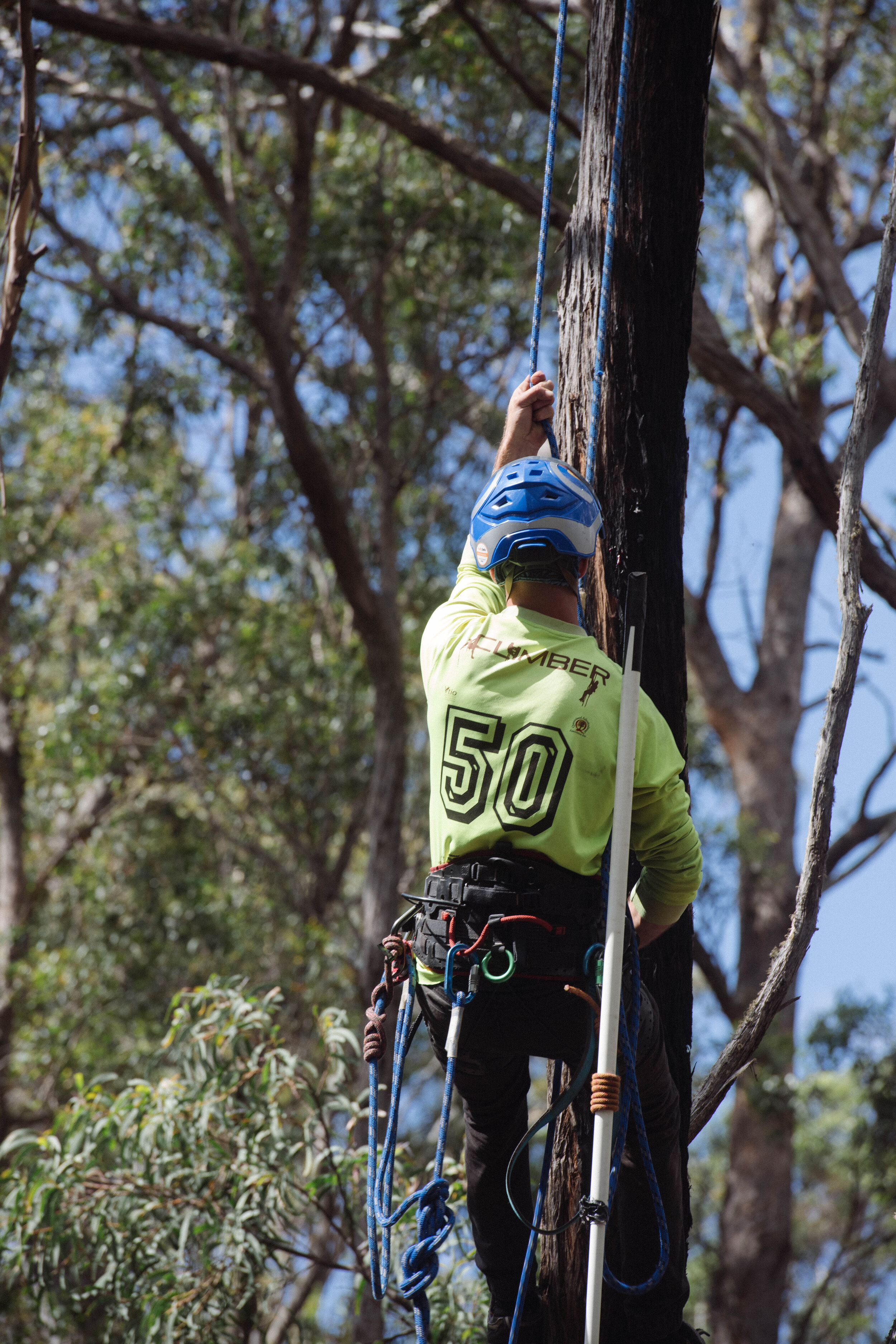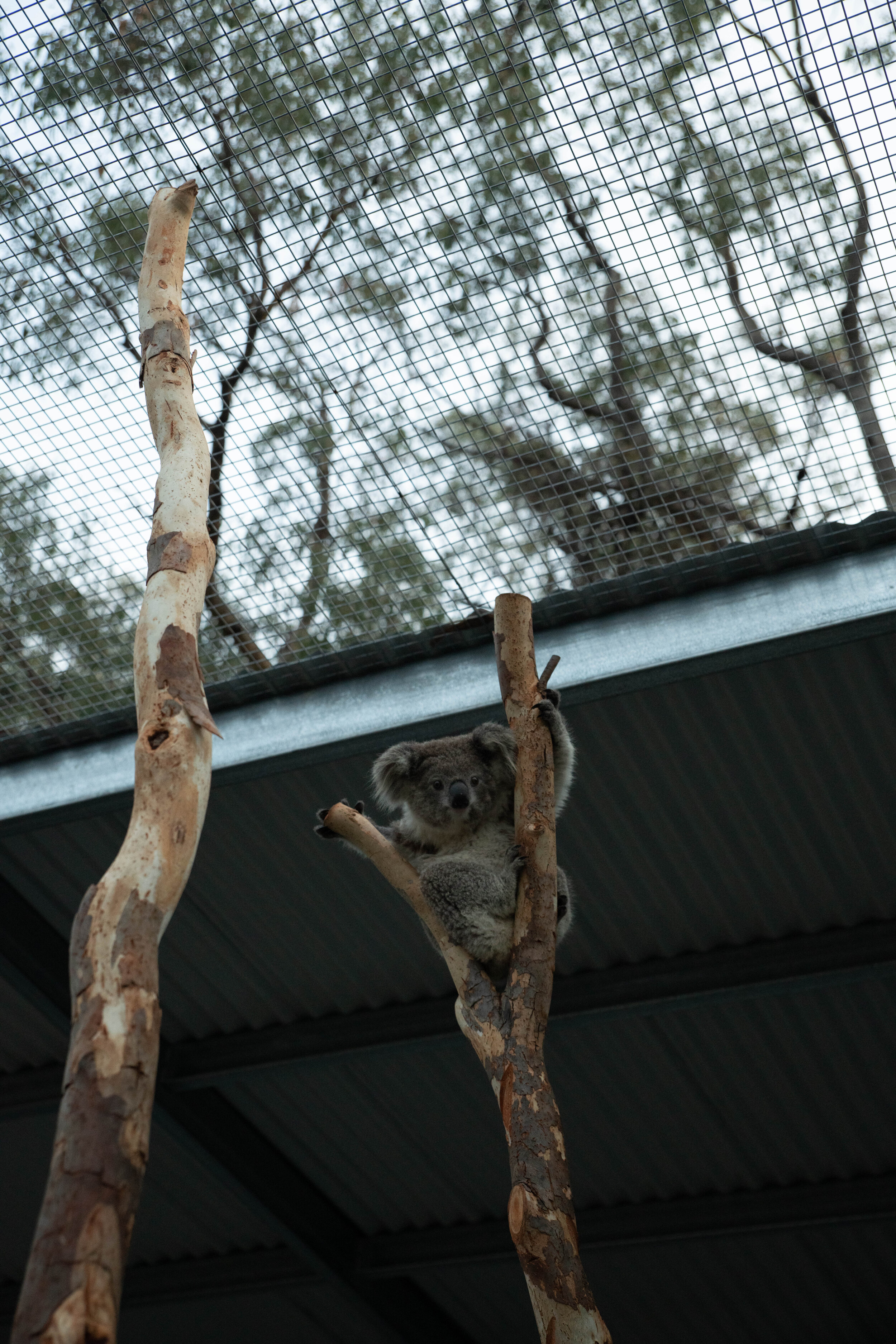The Two Thumbs Wildlife Trust + The Plight of the Koala
It was late January and Australia was deep in the throes of the worst bushfire season in its history.
Day after day new fires emerged and firefighters desperately fought to keep the flames under control. But the massive fires overwhelmed those fighting them, the fires burned hot, fast, and unpredictably. They moved through bone dry forests with a speed and ferocity that was near impossible to control. Australia had been in a drought for over a year, and much of the bush had lain like kindling for months...just waiting to be lit.
By the time November rolled around, the smallest spark could set a hillside on fire. Those whom had watched their land, forest, crops and flowers wither over the last year knew how vulnerable they were to fire but no one could have predicted the magnitude of devastation this year’s bushfire season would bring with it.
James Fitzgerald, a native wildlife rescuer and owner of The Two Thumbs Wildlife Trust, woke up in November to find himself smack in the middle of this climate disaster.
James is the owner and founder of the Two Thumbs Wildlife trust, a sanctuary dedicated to rehabilitating sick, injured and orphaned koalas. His property is made up of a trio of sanctuaries, spanning across 1,810 acres of pristine wilderness and was considered to be one of the healthiest habitats for koalas in New South Wales. James’ sanctuary also served as a release site for multiple other native wildlife care groups; wallaroos, swamp wallabies, red-necked wallabies, eastern grey kangaroos, laughing kookaburras, lyrebirds, crimson rosellas, and goannas all called Two Thumbs their home.
James Fitzerald of the Two Thumbs Wildlife Trust in a burnt out forest in Nerriga, NSW, Australia (image © Olivia Katz)
James had built this sanctuary over the last 16 years, it was a labor of deep love and devotion to the land and animals of Australia. Countless hours and sleepless nights, he cared for the forest and its creatures. He rehabilitated and released injured, sick and orphaned koalas back onto the property that otherwise would have had little chance of survival.
So when this year’s bushfire season began to unfold, his property surrounded by dry bushland, and located in an epicenter of the bushfire crisis in New South Wales, it was with an impending sense of doom that he woke up each morning.
But, like most Australians in times of crisis, he stepped up to help those in need rather than recoil and shelter in place. In addition to the full time work he does at his sanctuary, James is also a volunteer rural firefighter and when this season’s fires began to erupt he immediately jumped to the front line to help.
His days blended together, waking up each morning to what must have felt like a smoke filled war-zone. Every-day, without fail, James could be found in the bush fighting fires, rescuing and relocating animals, evacuating residents, and trying desperately to protect his sanctuary. He didn’t stop, he couldn’t stop, because you don’t rest while you’re at war. You fight.
And each new day, the fires continued to spread with abandon, ripping through forests and towns, tearing open new wounds wherever they went. The fires moved without morality or conscience and decimated everything in their path.
James had been forced to evacuate his property multiple times but by mid-January it was looking like his place might miraculously survive this year’s bushfire season with minimal damage.
That was until January 23rd 2020.
On January 23rd a capricious shift in the winds sent a new fire raging in the direction of Two Thumbs.
That day, James had been in the bush with his fire brigade. He had just rescued a Koala from a fire-ground and then evacuated an elderly woman who was living in Numerello, an area they anticipated would burn. They helped her get to a safe place and then James rushed to the vet in Cooma to get the koala in care.
James knew that with this change in the wind, a fire was moving towards his sanctuary but he didn’t know yet what was happening there. He tried to call his fire captain but couldn’t reach him.
So, James headed home...dreading what he might find.
An excerpt from our interview:
Driving along the road I could see that my place was definitely on fire. When I got to my road, there was a police car stopping all traffic, I explained who I was and told them I had a couple koalas and other animals in care and needed to get inside.
When I drove into my place I saw my house had been completely burnt to the ground. It was still on fire.
I had a room in the house which I had one high care koala in…so I knew immediately that koala had been burnt to death. I had a second house with a big workshop behind it and that’s where I had my goannas, and that was all gone too. So I knew they were gone.
I had a Koala in an enclosure about 1.5 kilometers from the house and I just hoped…that she might be OK. So I drove as quick as I could to that enclosure...and it was partially collapsed and on fire. Her name was Greta, after Greta Thundberg, and…yeah..she was burnt to death as well.
So, then I thought, I need to get out of here quick. As I was driving up the road my group captain approached in a fire truck and you could see that that day had taken a toll on the local brigade. Because as most people know, the C130, a large air tanker, had dropped retardant on my place and then crashed into my neighbor’s place…and the three American pilots were all killed. When I saw my brigade I saw they all had tears in their eyes. It’s just, a huge tragedy, the whole situation, I try pretty hard not to think about it. (James Fitzgerald)
Below, images of James’ property, after the bushfires. And the mat where he slept in the forest, in the days following the fires. (images via James Fitzgerald)
James recounted his story while we sat perched on charred black trees which had fallen in the fires, in a forest near Nerriga. He and his koala rescue team were doing what they called “black walks”, searching the burnt forest for animal survivors. While the fires had gone out three months ago, the land had far from recovered, and James knew that the window of time to continue finding survivors was quickly dwindling. Any koalas found in the burn areas at this point would likely be in terrible shape, as they had endured the trauma of the fires only to be left in a forest that was no longer hospitable to life, with almost all their food sources destroyed, their homes burnt, the air filled with smoke, the ground smoldering, and most of the other animals, gone.
As I looked around the forest, the most distressing part of the scene was not what I saw or heard, but what was distinctly missing from the picture. Typically, this forest would be buzzing with the movement and music of thousands of animals and birds, kangaroos, wombats, wallabies, lyrebireds, kokkaburras, cockatoos, and currawongs.
But this forest was quiet, deserted, desolate. The wildlife and plant life had been decimated in the fires. And what was left, was an empty shell of what had existed prior. The forest was going to have to start over.
James Fitzgerald searching for koalas in the Nerriga forest (image © Olivia Katz)
These blazing hot flames which raged on for months, took with them, 46 million acres of pristine land, an estimated 1 billion animals, and around 3,000 homes. But within those numbers are stories. Personal, heart-wrenching, devastating stories of loss and destruction.
James’ story is a difficult one to write about because it reveals the excruciating personal impact of these fires. The native wildlife carers of Australia are most often volunteers who have committed their lives to protecting and caring for animals and their habitat. They serve as guardians and protectors of these creatures, in a world which in great part seems to have forgotten them.
And then overnight and often without warning, these fires came and took it all away for many of them. Destroying, in James’ case, over 16 years of work at his sanctuary, all the koalas and goannas he had been caring for...and most of the animals which had been re-released onto his property.
The damage these fires have caused, is to a certain degree, incalculable. The numbers and statistics only tell a small part of the story, because these wounds have been seared into the ground and sown into the hearts of all who have survived them. This bushfire season was a deeply traumatic one and is something that some may never fully recover from.
I bought the first property in 2004, the second one was in 2013, and the third property was in 2016, they are all adjoining. The really great thing about it was the koala population was starting to come back. In 2004 when I first bought the place you had to sit way out in the back of the bush to hear the koalas whereas now, you could hear them as you were putting clothes on the line…they had expanded across the property, and I could go for a walk in the bush and find a koala almost guaranteed, every day. So, the population had really recovered in the last 15 years…but now, it’s been decimated.
From rescuing survivors, I think everyone agrees, there were a lot more there than we thought.
Because there wasn’t much chance of surviving on my place, the forest did get burnt, it burnt extensively and pretty hot. And yet we have rescued 11 koalas out of that property, so, they would be a small percentage of what was there. (James Fitzgerald)
Below are a series of images that James provided, from his work at Two Thumbs and in the field. The neon images were taken with geothermal imaging cameras used to locate koalas.
This property was considered to have one of the healthiest populations of Koalas in New South Wales. This sanctuary, also a release site for three other local native wildlife groups, served as a crucial habitat for many threatened species, including the Greater Glider, the Rosenberg Goanna, and the Quoll.
In order to understand the gravity of this loss and why properties like this are vital to the survival of Australia’s wildlife, it is essential to place it within the greater context in which Two Thumbs Wildlife exists.
Deforestation, feral predators, inappropriate fire regimes, and climate change are just a handful of the challenges these animals must contend with in order to survive. Ultimately, the preservation and protection of any remaining healthy habitats for these animals will determine their fate; and it is the responsibility of humans, whose behaviors are in great part the root of these problems, to shift our way of life so that these animals do not become extinct.
This is Amelia, a baby Koala that was rescued in Southern New South Wales. She was found in an area that had been badly burned and it lacked healthy eucalyptus trees, their main food source. Her mum was starving and near death when James Fitzgerald rescued them. She is now in the hands of some incredible carers in Forbes Creek, NSW and is on her way to recovery. (image © Olivia Katz)
A report published by the World Wildlife Fund Australia in partnership with the Climate Council in 2019 reveals the impact this changing climate is having on Australia’s native wildlife.
This latest Australian summer has shown us that climate change is here and it’s having grave impacts on our precious wildlife now. We can no longer think of climate change as an issue for the future, for the next generation to deal with. We know that climate change is making our weather hotter and, in many areas, drier. Severe heatwaves are the new normal and droughts are longer and harsher. When it does rain, the downpours are becoming more intense, causing flooding.
A hotter, drier climate primes the bush for wildfires of increasing intensity and extent, with ecosystems such as Queensland’s rainforests and ancient Tasmanian forests suddenly now vulnerable. Marine heatwaves along Australia’s coasts are now regular events that result in extensive coral bleaching, such as we have witnessed in the summers in 2016 and 2017 on the Great Barrier Reef.
Australians know it’s getting hotter and drier, they understand that sea levels are rising, and wildfires are now more widespread. They’ve suffered through flooding rains and the intense winds of Category 5 cyclones. But not all Australians know how our wildlife is suffering as climate change takes hold...
Australia’s iconic koala is suffering from large-scale loss of habitat throughout Queensland and NSW; in fact the current trajectory of population decline, if unabated, would result in the koala becoming extinct in NSW by 2050.
But while the march of the bulldozers is plain to see, another killer – silent and insidious – is also at play. As the climate across large parts of Queensland and NSW gets hotter and drier, the leaves of Eucalypt trees – the preferred food of koalas – store less moisture and become less nutritious. As koalas starve and get increasingly thirsty, they are forced to move trees or seek water from alternative sources. Spending more time on the ground moving from tree to tree or trying to find water makes koalas vulnerable to attacks from dogs or vehicle strike – in most cases, fatally. (WWF Climate Council, joint report produced by WWF-Australia & Climate Council)
For the native wildlife carers of Australia, the road ahead looks more arduous than ever before. The challenges they faced pre-bushfire season were already numerous, but after three months of calamitous fires, a lot of them are struggling to recover. With little support from the government and such vast damage to their properties and wildlife, the path to rebuild will not be an easy one.
An injured koala in need of care in Nerriga; it took two days but James and his team were eventually able to rescue him and get him into care. (image © Olivia Katz)
Despite the immense loss James has had to come to terms with, he continues to do the work that he has committed his life to. Every day he is out in the bush searching for animal survivors, rebuilding enclosures and working to improve the plight of the koala and the future of Australia’s wilderness.
Through a GoFundMe campaign that was started on his behalf in the wake of the bushfires, James was able to raise over $134,000... of which he turned around and donated $100,000 to the Australian National University to help fund bushfire related koala research. Additionally, to express his deep gratitude and sorrow, for the heroic efforts of the three American pilots who died while trying to protect Two Thumbs, James made the donation in their name; Captain Ian McMeth, officer Paul Hudson, and flight engineer Rick DeMorgan Jr.
It’s taking considerable time and effort, but with the help of an extraordinary team of vets, tree climbers, builders, researchers, scientists, wildlife carers, and non-profit organizations, James and the Two Thumbs Wildlife Trust is beginning to recover.
When we visited James in Nerriga we saw firsthand the enormous effort that goes into caring for these animals. It takes around 15 people to get a starving koala out of a tree and it can sometimes take days to do so. Once in care, these koalas are evaluated for burns, infections, injuries, and often starvation and dehydration. The vets that treat them are most often volunteers and the treatments can cost thousands of dollars. If it is a baby koala, or a “joey”, that has been orphaned it will require around the clock attention and care.
The Australian Humane Society, Animals Australia, Vets for Compassion, Wires, Narg, and Vets beyond borders have all contributed to support the mission of the Two Thumbs Wildlife Fund.
It’s been a heart-breaking start to 2020 for James Fitzgerald and so many others, but the people of Australia are resilient. Nature is resilient. The rebuild is happening. The forest is beginning to grow new leaves. There are koalas in care that are healing. The natural rhythm of life is, to a certain extent, a cycle of growth and thriving, shifting and transforming, disintegrating and then starting over.
And perhaps, just perhaps, this horrific bushfire season can serve as an opportunity to start over, to heal a system which has been broken and on a path of destruction for hundreds of years. Perhaps this is the kind of event, excruciating, jarring, life-altering, loud and impossible to ignore that re-awakens in the hearts of humanity a recognition of our intrinsic connection and dependence on nature. And an understanding that when one part of the eco-system begins to fail, it sets in motion a domino effect of disintegration. We want to live and thrive just like the animals in the forest want to. Don’t all creatures deserve a chance to thrive?
Black forest walks in southern New South Wales searching for koalas and koalas in care at the facility of Dr. Karen Ford:
To learn more, visit Two Thumbs Wildlife Trust
Thank-you to Bill Waterhouse of the Major’s Creek Wombat Sanctuary for the introduction to his dear friend and colleague James Fitgerald and help and support while working on this project. Special thank-you to Ben Woltmann and Jaime Vives Moreno for accompanying and assisting me on this project. Interview filmed by Jaime Vives Moreno. And deep gratitude to James Fitzgerald for opening his world to us and letting us inside.
To learn more about how you can help the koalas please visit the World Wildlife Fund Australia
$25.00


